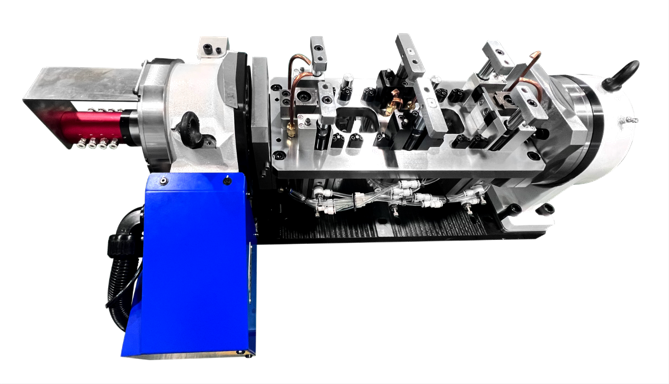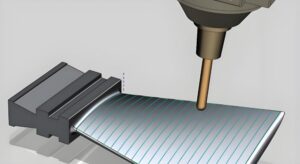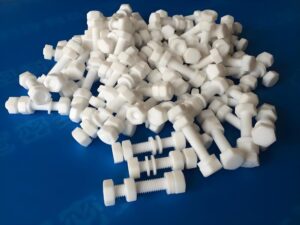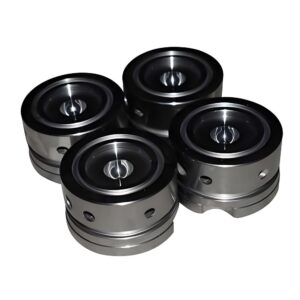In the world of precision machining, CNC fixtures are indispensable components that help streamline the production process. These custom-made tools are designed to securely hold a workpiece in place during machining operations, ensuring accuracy and efficiency. This blog delves into the importance of CNC fixtures, their design principles, components, applications, and more, providing a comprehensive guide for professionals and businesses in the machining industry.
What is a CNC Fixture?
A CNC fixture is a specialized device used to hold, support, and position a workpiece during Computer Numerical Control (CNC) machining operations. CNC machines, such as milling machines, lathes, and routers, are capable of performing intricate tasks with high precision. However, for these machines to operate at their best, the workpiece needs to be held securely and aligned correctly. That’s where CNC fixtures come in.
Fixtures are custom-built based on the shape, size, and material of the workpiece, ensuring the workpiece remains stationary during machining processes. They help achieve greater accuracy, reduce setup time, and prevent movement that could compromise the quality of the finished product.
The main goal of a CNC fixture is to position the workpiece precisely, reduce manual intervention, and allow for high-volume production with minimal errors. By providing a stable base, CNC fixtures contribute significantly to the consistency and quality of the finished parts.
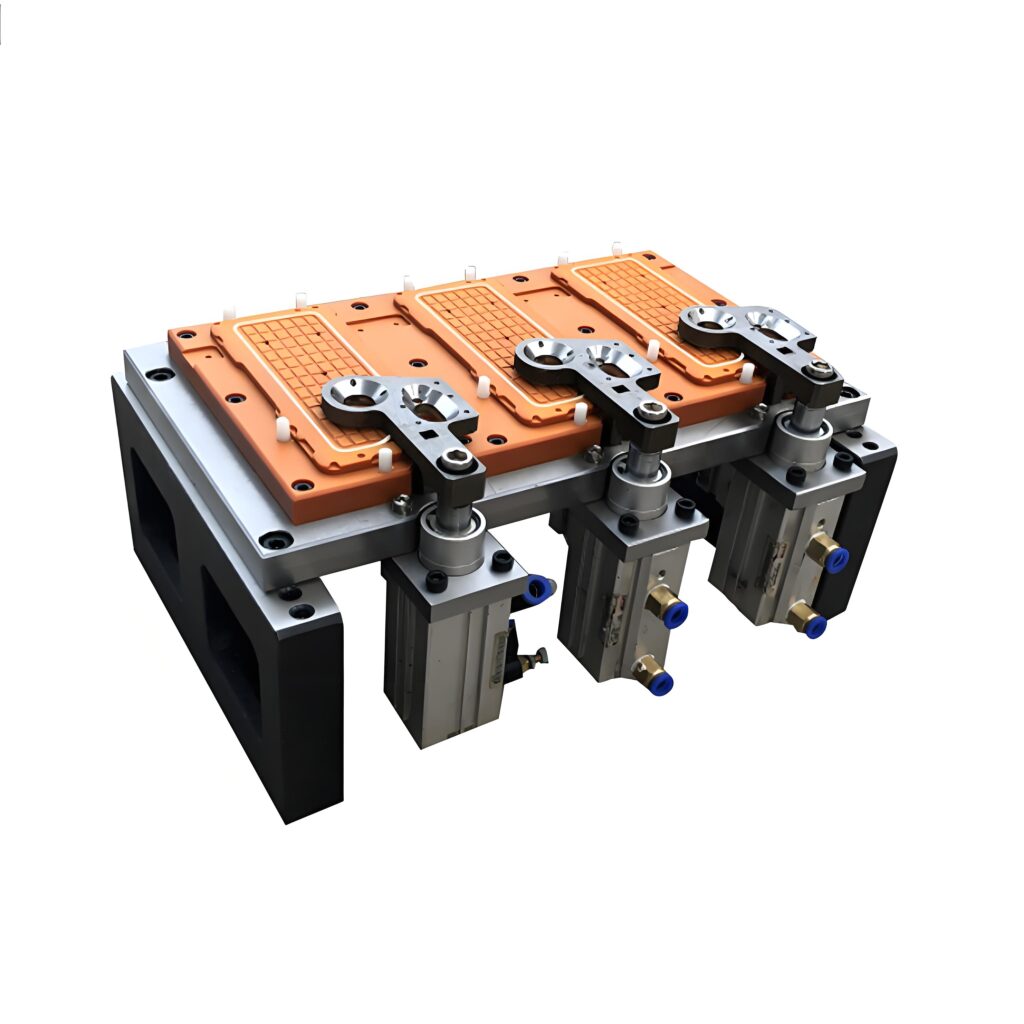
Design Principles of CNC Fixtures
When designing a CNC fixture, several principles come into play to ensure optimal performance, safety, and efficiency. These principles guide fixture manufacturers and machinists in creating solutions that meet both operational and technical requirements.
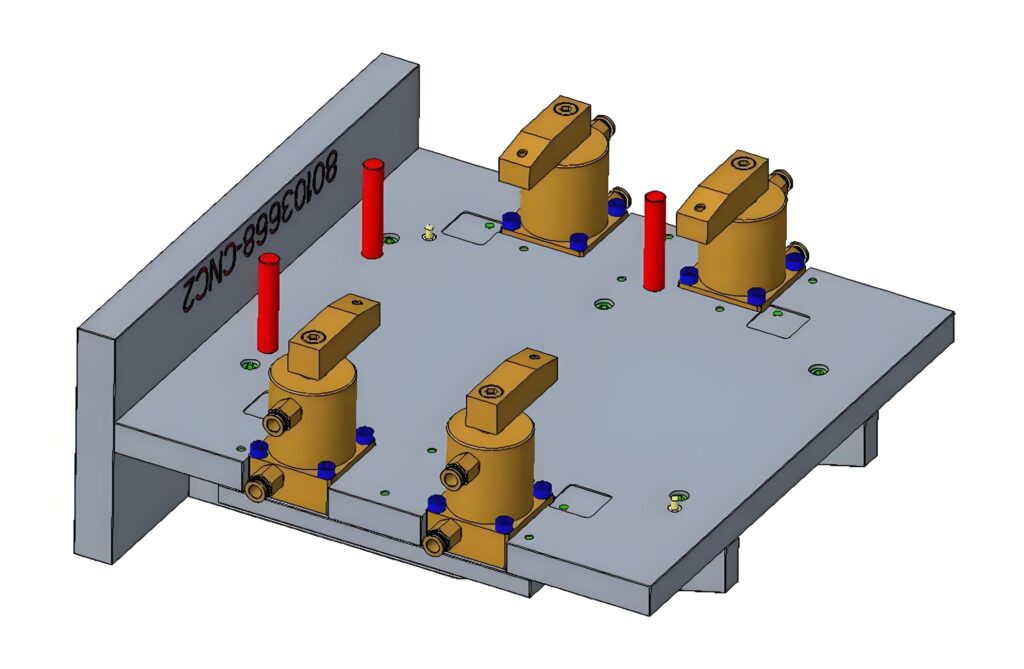
1. Stability and Rigidity
A CNC fixture must be designed to withstand the forces generated during machining without bending or flexing. This stability ensures that the workpiece remains securely in place and prevents vibrations that could lead to inaccuracies. Fixtures should be constructed from durable materials such as high-strength steel or aluminum, depending on the application.
2. Accessibility
The fixture design must allow easy access to the workpiece from all necessary angles for machining. This ensures that tools can approach the part without obstruction, allowing for more complex operations and minimizing the risk of tool collisions.
3. Repeatability
Fixtures should be able to hold parts consistently in the same position. This repeatability is crucial for CNC machines to execute precise cuts on multiple parts with minimal variation, especially when working in mass production or batch processing scenarios.
4. Quick Setup and Adjustment
A good CNC fixture allows for easy setup and adjustment. This minimizes downtime between production runs, boosting productivity. The fixture should accommodate various part sizes and allow for quick changes between different workpieces without the need for complete reconfiguration.
5. Cost-Effectiveness
While precision is important, CNC fixtures should also be cost-effective. Materials and manufacturing processes should be chosen carefully to balance cost with performance. Investing in durable and well-designed fixtures can lead to long-term savings by improving operational efficiency and reducing tool wear.
What are the Components of CNC Fixtures?
CNC fixtures typically consist of several key components that work together to hold and support the workpiece during machining. These components are designed to provide flexibility and precision, ensuring that the workpiece remains stable throughout the process.
1. Base Plate
The base plate is the foundation of the fixture and provides a flat, rigid surface to support the workpiece. It is usually made of steel or another durable material and is designed to be easily mounted on the CNC machine’s table.
2. Locators
Locators are devices used to position the workpiece accurately on the fixture. They ensure that the part is aligned properly for machining, preventing it from shifting or rotating during operations. Locators are often adjustable to accommodate various part sizes.
3. Clamps
Clamps are used to securely hold the workpiece in place on the fixture. They come in various types, such as pneumatic, hydraulic, or manual clamps, and are designed to apply enough pressure to prevent any movement without damaging the part.
4. Supports
Supports provide additional stability to the workpiece, especially when machining large or irregularly shaped parts. They help distribute the machining forces evenly and reduce the risk of distortion or movement during cutting.
5. Indicators and Sensors
In more advanced CNC fixtures, sensors and indicators can be integrated to monitor the position and orientation of the workpiece in real-time. These components can trigger alerts if the part shifts, allowing operators to correct issues before they affect the machining process.
How to Process CNC Fixtures?
The process of creating CNC fixtures typically involves several stages, from design to manufacturing. The goal is to ensure the fixture is both functional and durable, able to withstand the demands of high-speed machining.
1. Design and Planning
The first step in creating a CNC fixture is designing the fixture based on the workpiece’s geometry and the machining operations that will be performed. Computer-aided design (CAD) software is commonly used for this phase, allowing engineers to create detailed models of the fixture and simulate its functionality.
2. Material Selection
Choosing the right material is crucial for ensuring the fixture’s performance. The material must be strong enough to withstand the forces generated during machining, while also being cost-effective. Common materials include steel, aluminum, and sometimes polymer composites for lighter applications.
3. Manufacturing the Fixture
Once the design and material have been chosen, the fixture is manufactured. This process typically involves precision machining, welding, and assembly. CNC machines are often used to create the individual components of the fixture, ensuring high precision and consistency.
4. Assembly and Testing
After all components are manufactured, they are assembled into the final fixture. During assembly, adjustments are made to ensure that the fixture aligns properly with the CNC machine’s table and holds the workpiece securely. The fixture is then tested to verify that it meets all design specifications and performs as expected.
5. Installation and Operation
Once the fixture has passed testing, it is installed on the CNC machine. Operators then load the workpiece into the fixture and begin machining. During operation, the fixture’s performance is continually monitored to ensure that it maintains the required precision and stability.
What are the Application Industries of CNC Fixtures?
CNC fixtures are essential tools used in various industries that rely on high-precision machining. Their ability to hold workpieces securely during the machining process makes them ideal for applications across multiple sectors.
1. Automotive Industry
In the automotive industry, CNC fixtures are used to manufacture complex parts such as engine blocks, transmission components, and brake systems. The high precision required for these parts makes CNC fixtures an indispensable tool for ensuring that each component meets strict quality standards.
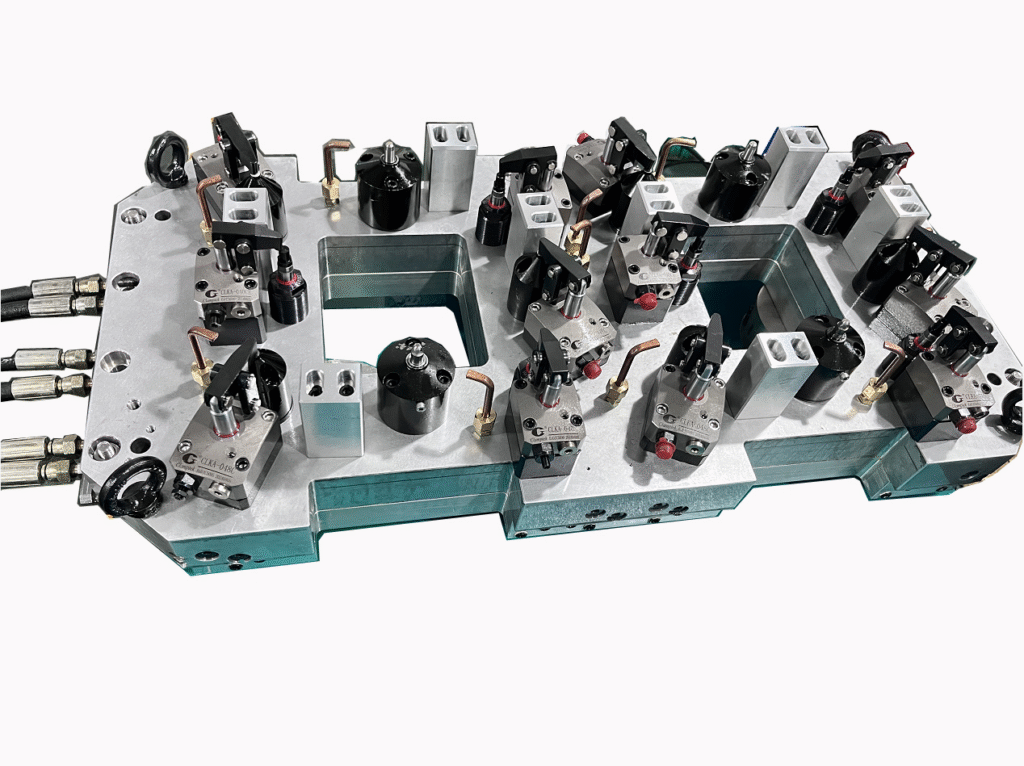
2. Aerospace Industry
The aerospace industry demands the highest levels of precision due to the critical nature of its components. CNC fixtures are used to machine parts for aircraft engines, landing gears, and other aerospace systems. These fixtures ensure that parts are held securely while maintaining strict tolerances.
3. Medical Device Manufacturing
Medical devices, such as surgical instruments, implants, and diagnostic equipment, require exceptional accuracy. CNC fixtures play a crucial role in the production of these devices, ensuring that each part is manufactured to exact specifications for safety and effectiveness.
4. Electronics Industry
The electronics industry also benefits from CNC fixtures, particularly when manufacturing components like circuit boards, connectors, and housing for devices. These fixtures enable high-speed production with minimal error, ensuring that delicate components are handled carefully and accurately.
5. Energy Sector
CNC fixtures are used in the production of parts for the energy sector, including power generation equipment, turbines, and valves. Precision is essential in this industry, as the performance of these components can affect the efficiency and safety of energy production systems.
What are the Advantages of CNC Fixtures in Product Processing and Manufacturing?
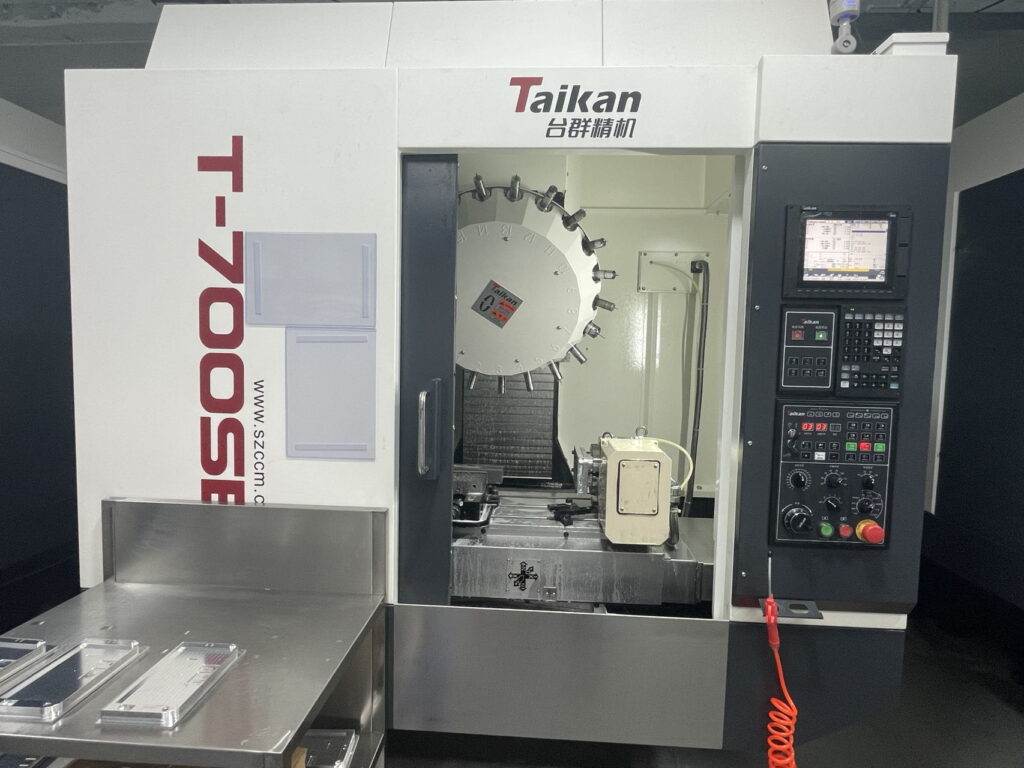
CNC fixtures offer several key advantages in machining, which significantly improve the efficiency, quality, and cost-effectiveness of manufacturing processes.
1. Increased Precision and Accuracy
The primary advantage of CNC fixtures is their ability to hold the workpiece in a fixed, precise position during machining. This ensures that cuts and other operations are performed with minimal deviation, leading to high-quality finished parts.
2. Reduced Setup Time
CNC fixtures allow for quicker setups, reducing the time required to prepare the machine for a new production run. This is especially important in high-volume manufacturing environments, where minimizing downtime can lead to significant productivity gains.
3. Improved Repeatability
CNC fixtures ensure that parts are held in the same position every time, which is crucial for mass production runs. This repeatability reduces the chances of defects and improves the overall quality of the products.
4. Cost-Effectiveness
By reducing the need for manual intervention and enabling faster setup times, CNC fixtures help lower labor costs and increase overall production efficiency. They also improve the longevity of tools and reduce scrap rates, further contributing to cost savings.
5. Enhanced Safety
By securely holding the workpiece, CNC fixtures reduce the risk of parts shifting or becoming dislodged during machining. This improves operator safety and reduces the likelihood of accidents on the shop floor.
Conclusion: Why Choose Precionn for CNC Fixtures?
At Precionn, we understand the critical role that CNC fixtures play in the machining industry. As experts in the field, we offer high-quality, custom-made CNC fixtures designed to meet the specific needs of our clients. Whether you’re in the automotive, aerospace, medical, or any other industry that requires precision machining, we have the expertise and experience to deliver solutions that enhance efficiency

